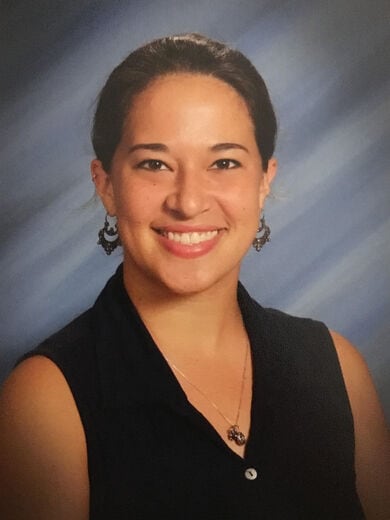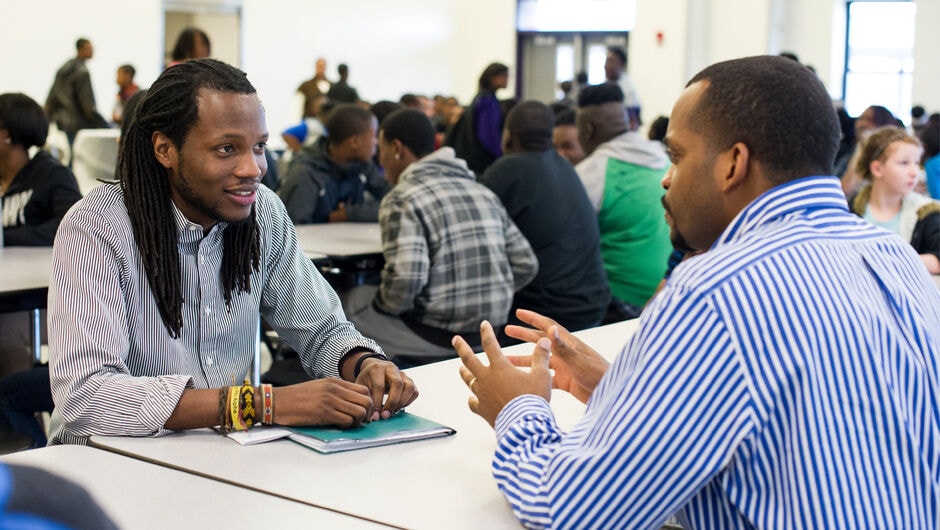Using Virtual Spaces to Teach—and Nurture—Students
This TFA alum is looking for ways to make her virtual classroom a destination that’s enriching, challenging, and as adventure-full as possible.
This letter from TFA alum Tian Buzbee (Greater New Orleans '13), a math teacher at Riverdale High School in Jefferson Parish, Louisiana, is the first in a series highlighting transformational leaders in Greater New Orleans. Tian shows how the events of the world are not separate from the classroom and learning—but essential to students’ experience.
Dear Teach For America community,
My name is Tian Buzbee. I am a high school math teacher with Jefferson Parish Public Schools. I write this at the close of the first week of our summer break in May, 2020. There are protests and riots across the country in response to the death of George Floyd and others. It has been a tumultuous and terrible week. Amidst all of the righteous fire, anger, and pain, I was talking to another Teach For America Greater New Orleans alum and we found some comfort in seeing so much allyship within our social media communities. I noted how many of those outspoken allies are from connections I’ve made through Teach for America. It is exhausting to notice the suffocating silence of friends when Black people continue to be killed. But I am heartened to see so many alums who, even if they’ve left the classroom or our region, continue to speak out in solidarity with Black lives and commit to doing the difficult work of being actively anti-racist.

Yesterday, a former student reached out to me. She told me how she’d been having trouble sleeping as she read the news every day. She said she had never cried as much as she had this past week. She also told me she was reading Michelle Alexander for the first time and learning from the giants of the Civil Rights era. The conversation was heavy but getting to check in with her was the highlight of my week. And when the conversation ended, it suddenly hit me just how much had been missing from this first round of virtual school this past spring.
When the governor’s announcement to close Louisiana schools came at 1 pm on a Friday in March, in the middle of lunch, we all—students, teachers, administrators—got the same alert on our phones at the same time. No warning, no preparation. School closed for one month. And almost immediately, on parallel tracks, Orleans and Jefferson parish schools began to hustle to take care of our kids. The district prioritized basic needs, making sure our families were provided meals. Then, the district tackled access to curriculum. Our school surveyed all of our families to address technology needs and we loaned school laptops, shared resources for discounted internet, and distributed packets for those families without internet access. Teachers innovated to figure out how to turn a physical classroom into an online space—creating websites and videos, Zoom chats and Instagram pages. Everyone was hustling to do the best we could with a situation that no one saw coming.
I had a coach in high school who always told our team to focus on the “controllables.” If it was storming, the only thing in our control was our mindset and how we worked in that storm. That lesson has stuck with me to this day and helped me through this spring, because I love teaching...and I absolutely hated doing it online. However, the COVID-19 closure was an “uncontrollable,” so I focused on what I could control. I made videos for our lessons and for student FAQs. I posted videos about mental health and shared almost daily puzzles to add some fun to our work. And I should note that I do recognize that aspects of virtual learning were better for some kids. They benefited from having recorded videos of lessons that they could access, rewind, and re-watch as needed. Having resource videos helped students work independently to puzzle through and figure out answers to math questions on their own. Some older siblings used the videos to help teach their younger brothers and sisters in my class. So, I felt okay about my videos, and I actually plan to continue to incorporate videos into my regular classroom.
But, in talking with my former student, I realized that I hated online teaching because the recorded content lessons were the bare bones minimum of what I want a classroom to be. I fell short of my own expectations for myself as a teacher. Virtual learning lacked the spice, comfort, and nutrition of our normal learning environment. I could not greet each student every morning as they entered our room. I could not gauge the mood of all of my students on a daily basis. I could not subtly check in on my shyer students like I do in class, those students of mine who would never seek out a phone conversation. I could not scan the room in a minute and get a read on my kids’ understanding of a lesson. I could not share corny jokes when the vibes were off and we were having a bad day (“Why do werewolves love health food? Because it’s super-natural!”).
I also failed to figure out how to not be the only voice teaching the lesson. We did not have a way to work in small groups and learn from each other with the hands-on activities that make math the most fun. Not only that, but I could not make my virtual class a safe lunch space as my room usually is, a place for current and former students to come talk through life.
Crucially, we could not process together the pain and anger over the killings of Ahmaud Arbery and Breonna Taylor. I could not simply record a video lesson to explain the math of racism. We could not use statistics to see how racist policies affect all facets of our community and why police brutality should be considered such an obvious issue. Our school is racially, economically, and politically diverse. Students’ opinions vary greatly. If we were going to talk statistics, we also would need room for thoughtful conversation and reflection. The conversations needed to be had face-to-face, and we did not have the trusted classroom space to have those difficult conversations.
But now, the year is over and we have some weeks to prepare for the fall. I value summer for the space to relax and reflect on this past year, to read all of the books that I often put aside while in the midst of the school year, and to do more in-depth work to filter my curriculum through a social justice lens.
Our challenge and our charge to educators, especially if the fall remains virtual, is to figure out what exactly we can do to make sure that we are also really seeing our children. What is Controllable in this Uncontrollable situation? What can we do to go beyond the basics of our curriculum, to make sure our classes are as enriching, challenging, and as adventure-full as possible? How can we create a virtual space that nurtures our kids and allows them to grow in all of the multidimensional ways of our regular physical classrooms? I have no answers to these questions. Not yet. But I have some time—we all do. Let’s use our time wisely.
Sincerely,
Tian
Sign up to receive articles like this in your inbox!
Thanks for signing up!
Content is loading...







